Priority Places for Food – examples of high-priority neighbourhoods across England, Wales, and Scotland
The Priority Places for Food Index (PPFI), developed as a collaboration between the Consumer Data Research Centre (CDRC) and Which?, was launched in 2022 to identify neighbourhoods that are most vulnerable to increases in the cost of living and which are likely to be food insecure.
In January 2024 we launched Version 2 of the index, providing the most up-to-date picture of food insecurity risk at neighbourhood level.
In this post, Dr Fran Pontin and Dr Rachel Oldroyd highlight diverse examples of high-priority neighbourhoods across England, Wales, and Scotland, illustrating how various factors and barriers can converge to create a ‘perfect storm,’ resulting in households experiencing hunger or being unable to access a balanced, healthy diet.
For instance, there may be areas where families with young children are facing financial struggles and dealing with escalating food costs, leading them to turn to food banks to ensure their children are warm and well-fed.
Or, in rural areas where people have limited access to cars and poor local public transport, the ability to choose from a variety of food options and find the best deals is constrained. This limitation forces residents to rely on often more expensive convenience stores with a restricted selection of healthy and budget-friendly items.
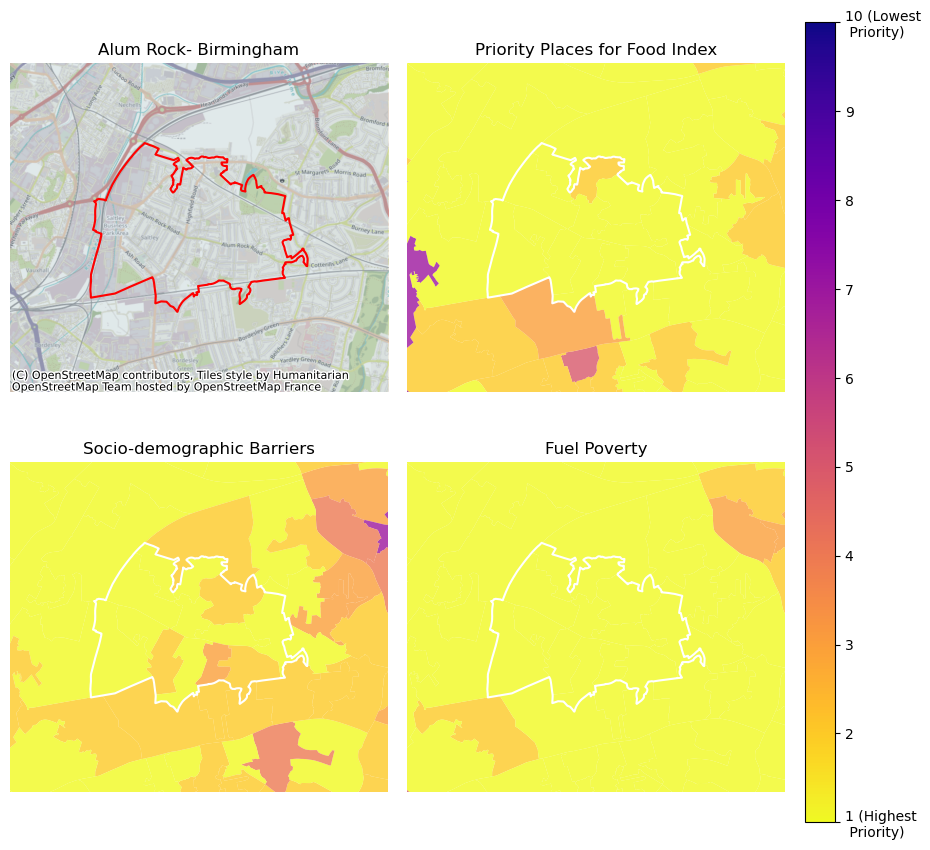
Alum Rock – Birmingham
Situated to the east of the city centre, Alum Rock is one of the most deprived wards in Birmingham, where 100% of the neighbourhoods in this area are classified as high priority places for food. This area has a young demographic, with 21% of the population aged 15 or under.
Therefore, presence of families and a related demand for family food support is particularly pronounced. Alum Rock is one of Birmingham’s most economically disadvantaged areas, with employment rates significantly below the city average.
Despite the presence of several supermarkets and convenience stores in the area, residents are likely to encounter substantial socio-economic barriers when attempting to access nutritious and healthy food. Moreover, this area reports high levels of fuel poverty, forcing many individuals to make difficult choices between heating and eating.
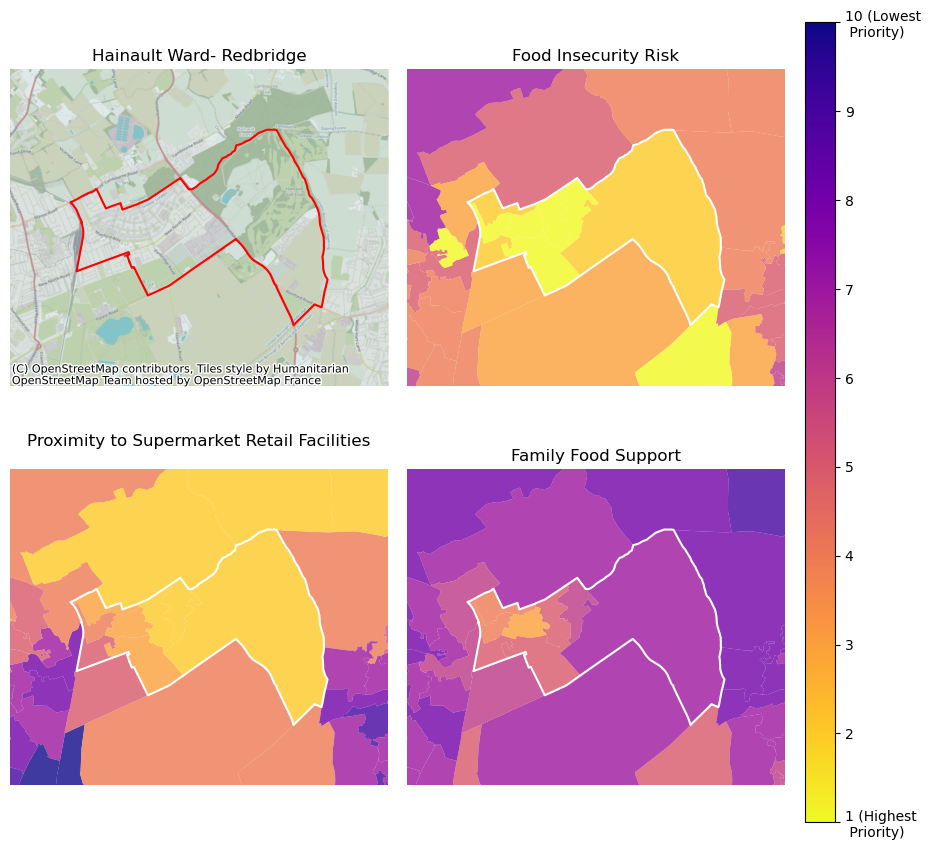
Hainault – Redbridge
Hainault is a good example of a ward where no one neighbourhood is the absolute highest priority within a specific PPFI domain when compared with the rest of England.
Here, neighbourhoods rank around the top 30-40% most in need across all the Priority Places domains. When considered in combination, however, these relatively high socio-economic risk factors paired with relatively poor access to purchase food contribute to high risk in food insecurity.
Compared to the borough population at the previous census in 2011, Redbridge has seen an increase in the proportion of families with children, more adults working shorter hours, increased population density and an increase in the number of people renting in the 2021 census.
This means by updating the data included in the Priority Places for Food Index, as new data comes available, we have captured these local area changes to give the most informed picture of food insecurity risk.
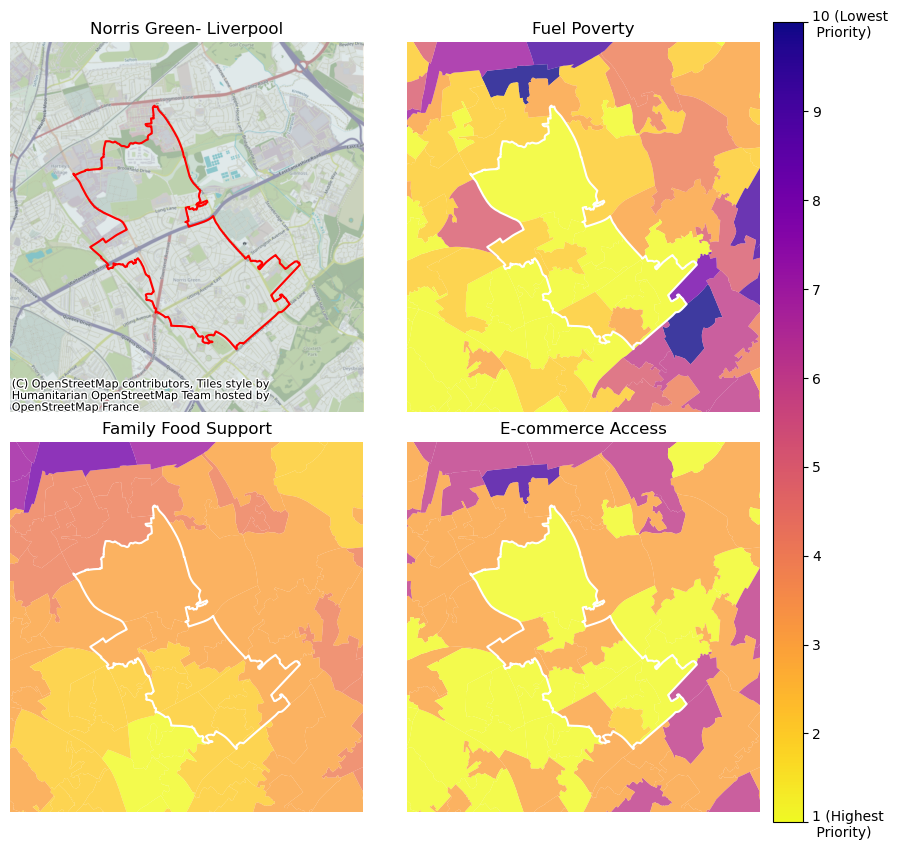
Norris Green – Liverpool
In the ward of Norris Green, Liverpool, all neighbourhoods bar one are in the top 20% of priority places across England and in need of support with food.
The ward of Norris Green demonstrates where socio-economic barriers paired with heating cost demands and reliance on additional food support have resulted in increased food insecurity risk.
We also see a discrepancy between fairly good proximity to supermarkets (i.e. there are lots of supermarkets nearby) but access to supermarket food via public transport or online delivery service is significantly poorer, suggesting that improving access to what is already there could be of benefit to this community.
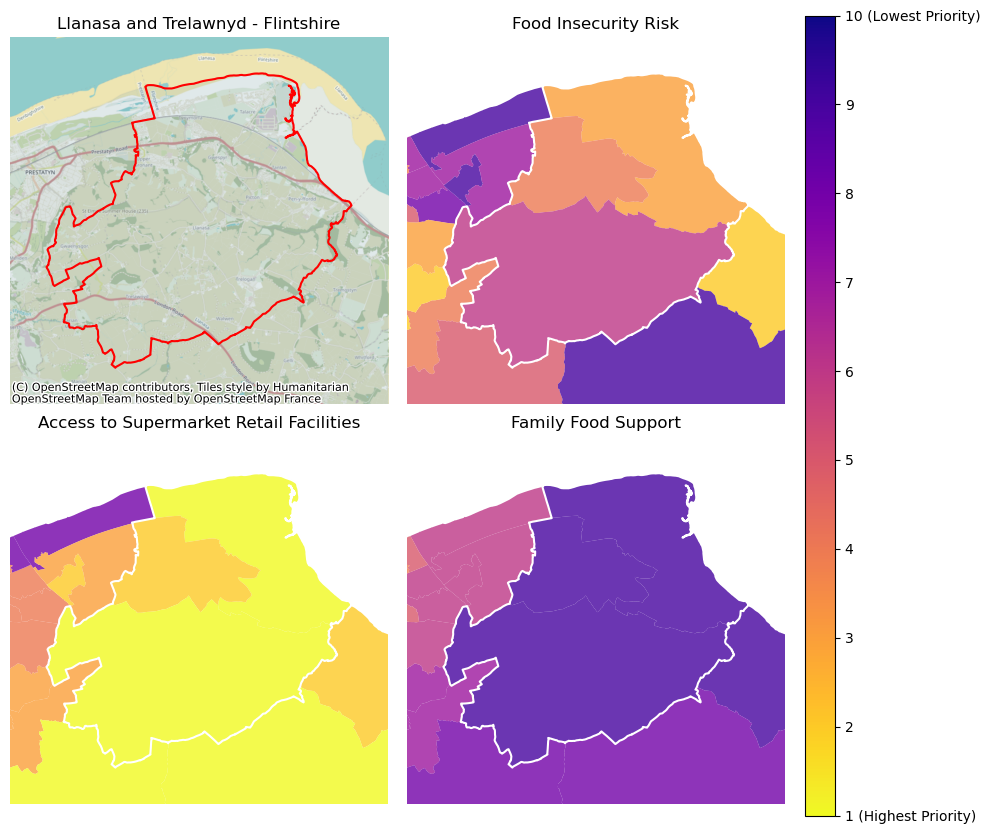
Llanasa and Trelawnyd – North Wales
In the ward of Llanasa and Trelawnyd in North Wales we see a good example of the importance of considering the domains in different population contexts.
The ward overall is not particularly high priority compared to Wales as a whole (in the top 30-60%). However, access to both supermarket and non-supermarket food is poor due to limited outlets in the local area. This ward has a large population of older adults so this poor access to food choice risks becoming a barrier to healthy and affordable food for these groups.
Conversely, we see less reliance on family food support as there are fewer school aged children (compared to Wales on average).
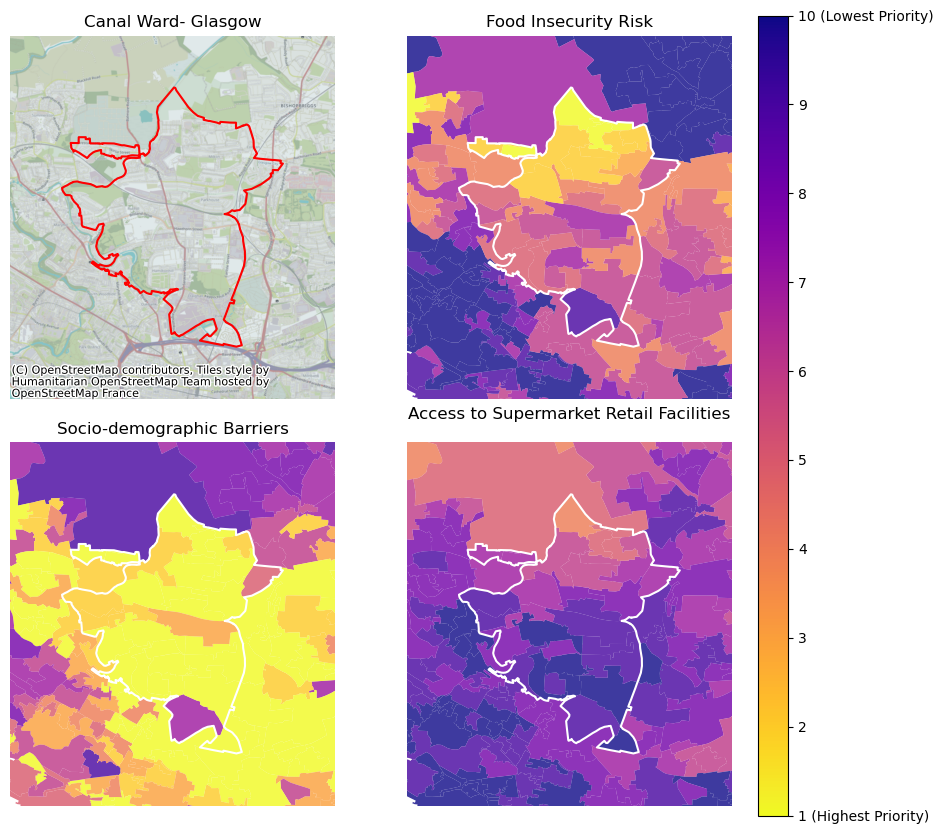
Canal Ward – Glasgow
In the Canal Ward of Glasgow, we see that some domains, such as the need for family food support are high across the ward whilst others such as socio-demographic barriers and access to supermarkets vary by neighbourhood. For example, towards the south of the Canal ward, towards Glasgow city centre, sociodemographic barriers are lower and access to supermarkets is better, making this neighbourhood a lower priority place compared to the rest of the ward, illustrating how the factors combine to make an area high priority.
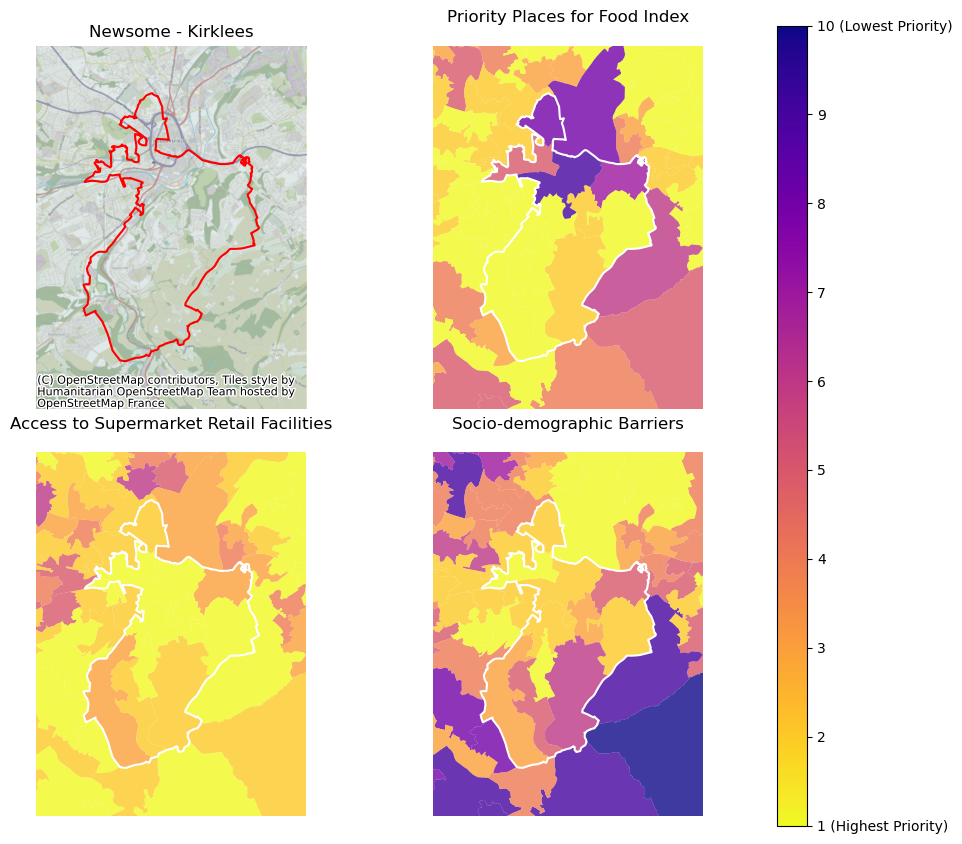
Newsome – Kirklees
Newsome, located to the South of Huddersfield town centre in Kirklees, is a good example of a traditional ‘food desert’ as 81% of the neighbourhoods in this ward have limited supermarket access.
Compared to other areas, the average distance to a supermarket and the average time taken to travel to a supermarket from this area via public transport is high. 40% of households in the area do not have access to a car or van so might find themselves struggling due to the lack of accessible supermarkets.
Compared to other priority areas, Newsome has lower need for family food support, and socio-demographic barriers do not contribute as much to the area’s level of priority for support.
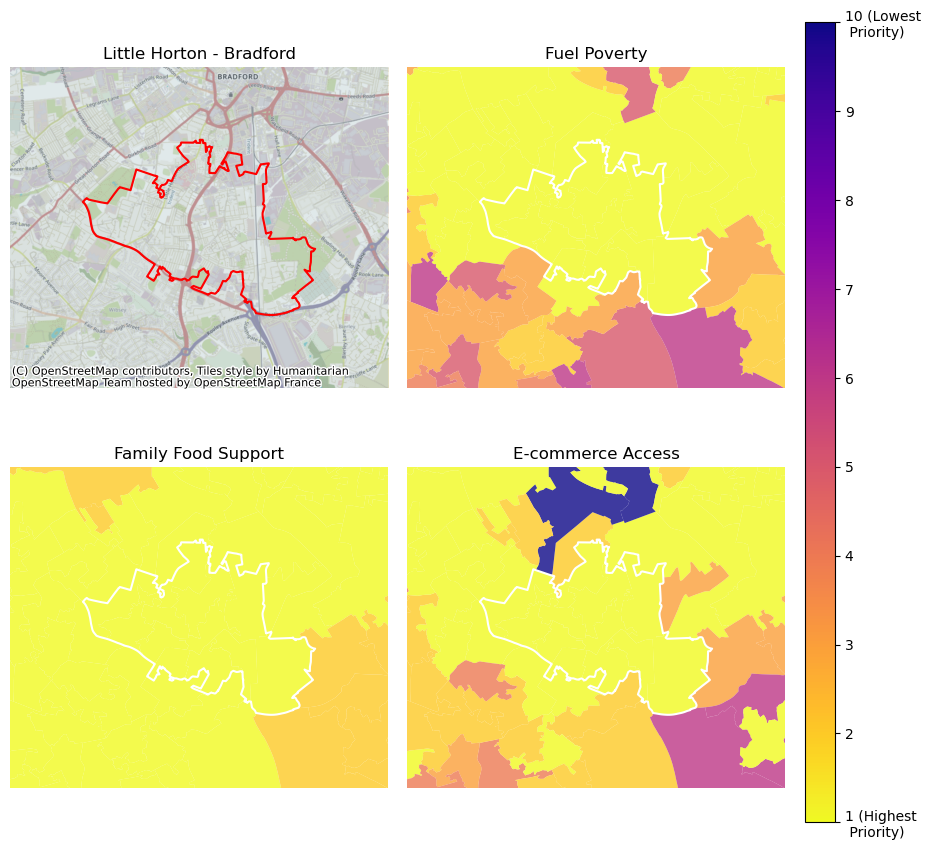
Little Horton – Bradford
Little Horton, to the South of Bradford City centre, is the second most deprived ward in the city.
Therefore, unsurprisingly, we note substantial socioeconomic barriers which limit access to healthy and nutritious food.
Little Horton has the highest percentage of children aged under 16 compared to other areas in Bradford and the need for family food support is high.
We see elevated levels of fuel poverty compared to other areas, and unemployment currently lies at 30%, well above the national average of 4.3%.
Little Horton is also an area of priority for ecommerce, so residents may struggle to buy groceries online, which is problematic for people who are unable to travel to the supermarket.

Eilean a’cheo – Scottish Highlands
Eilean a’cheo is a ward located in the Highland of Scotland and includes the islands of Skye and Raasay.
All 13 of the neighbourhoods within this ward fall within the highest priority places for supermarket proximity due to their remote location.
Residents of Eilean a’cheo are likely to face barriers accessing food due to the distance to the nearest supermarket.
All neighbourhoods within this area are also high priority for fuel poverty, with residents paying on average 76% above the national average to heat their homes.
Eilean a’cheo is also a priority area for ecommerce. Therefore, there may be difficulty obtaining online grocery deliveries compared to other areas.
How are you using the Priority Places for Food Index?
We’d love to hear how you are using the Priority Places for Food Index to better understand food insecurity risk in your area.
We always welcome suggestions from those using the tool to make it as useful as possible – please do get in touch with the CDRC Leeds team if you have any questions or recommendations.


